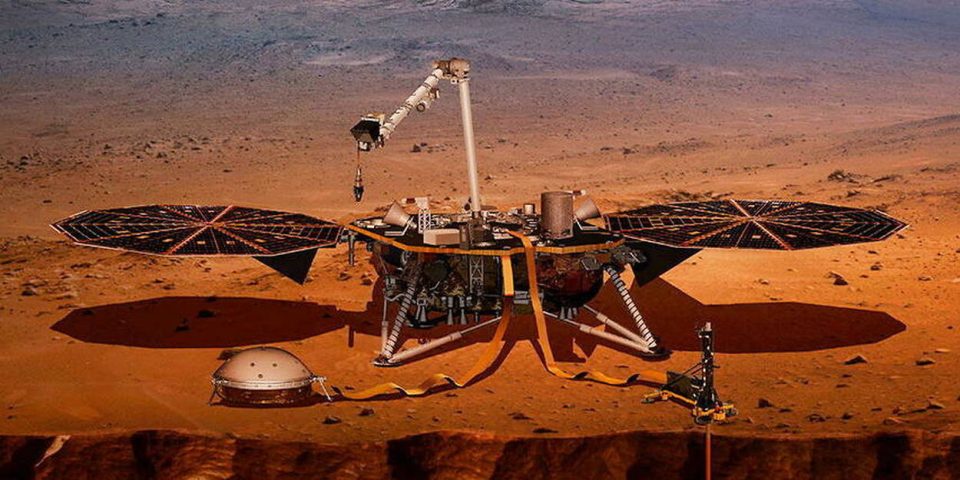It’is the largest earthquake ever observed on a planet other than Earth! On May 4, Nasa’s InSight lander, on a mission to Mars since November 26, 2018, detected, thanks to its French seismometer SEIS, an earthquake of magnitude 5. Of average power for our planet, this one is however close to the upper limit of what scientists expected to find on the red planet, devoid of plate tectonics. This new signal is in addition to the approximately 1,313 mostly weak Martian tremors recorded since the start of the mission, and dethrones the previous record: a magnitude 4.2 earthquake detected on August 25, 2021.
“The whole planet starts to vibrate, a little bit like a bell”
Beyond this record and curiosity, this is scientifically speaking excellent news. Indeed, if Insight has been tracking Martian earthquakes for more than three years, it is not to do Martian seismology, but to reveal what the red planet has in its belly: its internal structure. However, as the father of the SEIS seismometer, Philippe Lognonné, explained to us some time ago: “When we have very big earthquakes, the whole planet starts to vibrate, a little bit like a bell. So, thanks to the sounds it emits, we can manage to deduce what type of bell it is. “Simply because, when seismic waves pass through or reflect on the materials of the crust, mantle and core of Mars, they are modified in such a way that seismologists can, by studying them, determine the depth and composition of these different layers. This is to say if this record-breaking earthquake promises to offer scientists rich data. Especially since what they learn about the structure of Mars can help them better understand all the rocky planets of our vast universe.
TO READ ALSOWhat the InSight mission is teaching us about the internal structure of Mars
While waiting to draw an in-depth analysis and to allow the public to appreciate the discovery empirically, the National Center for Space Studies (Cnes) decided to convert the seismic wave into a soundtrack. Ready for the experience? Let’s listen to Mars tremble!
Science and tech newsletter
Great interviews, major discoveries, innovations and behind the scenes… Every Saturday, immerse yourself in the news of science and techs.
The editorial staff advises you

